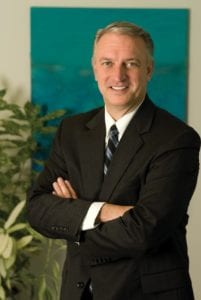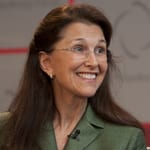 Generosity Commission Update
Generosity Commission Update
As we have each seen and experienced, 2020 has been a challenging and trying year on nearly every front. And yet, we have continued to see people across the country and around the world come together in support of others, demonstrating kindness and compassion, and expressing generosity at significant levels in every form – from giving to volunteering and civic engagement.
In recent months, supporters, researchers, partners and donors for the Commission have repeatedly told us that the Generosity Commission’s focus, outcomes and work are more urgently needed now than we might have imagined just a few years ago. Our goal to build a Commission that is nonpartisan and represents many sectors, with a broad diversity of stakeholders, voices, and expertise to explore profound questions that will shape the future of generosity in America, remains unchanged and is perhaps even more relevant today.
In this inaugural newsletter, we are delighted to share that we remain on track to launch the Commission in early 2021. We anticipate that the findings from the commissioned research, the national conversation we create, and the expertise received from the Generosity Commission members will commence in a full report and recommendations in mid-to-late 2022 – with several opportunities to share information about what we are learning along the way.
Each month, we’ll introduce you to members of the current Working Committee, highlight recent research, data and stories of interest, and share the latest updates on our work.
We hope you enjoy this holiday season. And, as much as possible, we hope that you can make time for rest, relaxation, reflection and ultimately, rejuvenation as we look to a year ahead with much work still to do.
With warmest regards,
Ted Grossnickle
Chair, Working Committee
The Generosity Commission
Current Insights on Generosity

Stanford PACS: How We Give Now
An early investment by the Generosity Commission Working Committee was to provide funding for a Stanford PACS research project entitled, “How We Give Now.” In the final 2020 report written by Lucy Bernholz and Brigitte Pawliw-Fry, we see the results of research that sought to improve our understanding of the different ways people in the U.S. give their time, money and other resources. With findings from 33 facilitated group discussions held in 15 states and the District of Columbia, we gain new insight into the “how” of people’s giving and not what, why or to whom. The findings are insightful and can inform how we think about generosity. For example, participants seldom mentioned tax codes in reference to their giving, but instead discussed giving locally, civic engagement and myriad informal giving acts, including sharing kindness and connecting others.
Points of Light Foundation: Civic Life Today: A Look at American Civic Engagement Amid a Global Pandemic
Generosity Commission Working Group member Natalye Paquin and her team at the Points of Light Foundation recently released the report, Civic Life Today: A Look at American Civic Engagement Amid a Global Pandemic. With research and insights reflective of perceptions during the pandemic, this report helps us gain a comprehensive look into the current state of civic engagement, a universal desire to do more in the future, and how we can help convert good intentions into positive action. Key themes from the report include:
- All areas of civic life will be more important post-COVID-19, as nearly 2 in 5 Americans say that after the coronavirus, they will do more to get involved than they did before.
- At the time of fielding, Boomer, Gen X and Millennial Americans were most concerned with addressing issues such as healthcare and hunger through civic engagement, while Gen Z Americans were also concerned with addressing issues of mental health and race/race relations.
- Gen Z Americans led participation in 7 out of 10 civic engagement activities surveyed when compared with other generations.
- Those most interested in volunteering have a notably stronger preference for activities that directly impact their local community, can be done in person and are offered on a regular basis.
- Among those interested in volunteering who have not yet done so, the greatest barriers to engagement are being “Unsure how to get involved or where to find opportunities” and “Unable to find opportunities near me.”
The Chronicle of Philanthropy, Philanthropy California and Dalberg Advisors: Shifting Practices, Sharing Power? How U.S. Philanthropy is Responding to the 2020 Crises
Shifting Practices, Sharing Power? How U.S. Philanthropy is Responding to the 2020 Crises includes findings from a survey of 250 foundation leaders and more than a dozen in-depth interviews to assess how the sector is changing in three ways: resourcing, priorities and internal operations. This report shares some significant shifts in practices including:
- Resources – 60% of respondents have or plan to increase giving beyond 2020 planned levels with an average increase of 17%.
- Priorities – an average of 26% of 2020 giving is now expected to go towards COVID-19 response and recovery, with a focus on programs to support communities.
- Internal operations – 85% of respondents are making changes to grantmaking practices to support existing grantees, including loosening restrictions and reducing reporting requirements.
 “In a world changed by global crisis, we must break down barriers to engagement and help people find the inspiration, creativity and sustained energy to do good every day that strengthens communities and solves persistent challenges.”
“In a world changed by global crisis, we must break down barriers to engagement and help people find the inspiration, creativity and sustained energy to do good every day that strengthens communities and solves persistent challenges.”
– Natalye Paquin, President & CEO, Points of Light
Member Profile
 Jane Wales, Vice President and Executive Director, Program on Philanthropy and Social Innovation, The Aspen Institute; Founder and Former President of the Global Philanthropy Forum; Chair, Research Committee, The Generosity Commission Working Committee
Jane Wales, Vice President and Executive Director, Program on Philanthropy and Social Innovation, The Aspen Institute; Founder and Former President of the Global Philanthropy Forum; Chair, Research Committee, The Generosity Commission Working Committee
About Jane:
Jane’s career has spanned the U.S. government, philanthropy and the media. She has held senior positions on the National Security Council and the White House Office of Science and Technology Policy, as well as leading foundations. Her leadership on critical issues of sustainable economic development and international security and her unique understanding of the relationship between citizen engagement and a robust democracy make her an invaluable contributor to the work of the Generosity Commission.
In Jane’s words: Why is the work of the Generosity Commission so crucial?
At a time when citizen trust is in decline, we cannot help but note that the health of our society and our democracy depends on citizen engagement, including voting, giving and volunteering. Each contributes to our unique form of self-governance in which the public, private, and citizen sectors each have a vital role to play. The Generosity Commission will delve deep into the research to understand how social, cultural and economic factors may affect these forms of civic participation. And it will share ideas for invigorating the spirit of generosity that is so much a part of American civic life. Our democracy depends on it.